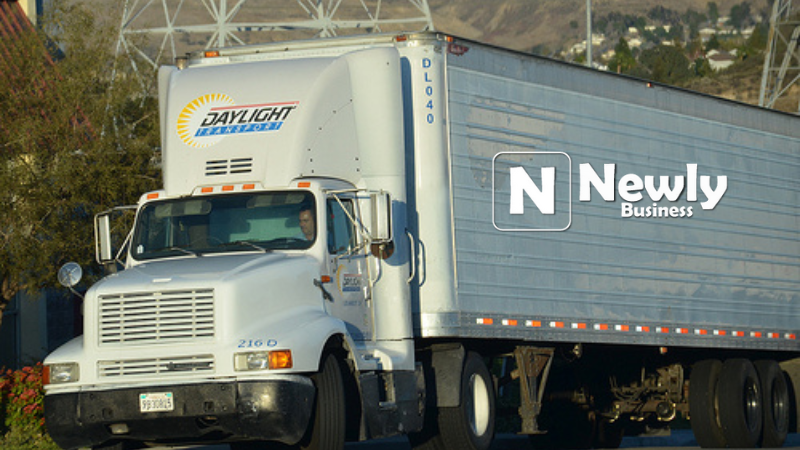In today’s fast-paced logistics industry, staying updated with every step of the transportation process is not just a convenience—it’s a necessity. That’s where daylight transport tracking comes in. It bridges the gap between uncertainty and real-time information, giving businesses and customers a clearer picture of where their freight is at any given moment.
This modern system enables a seamless and stress-free shipping experience, eliminating guesswork and building trust through transparency. With visibility becoming a major factor in choosing a logistics provider, having a reliable tracking solution is no longer optional—it’s expected.
How Daylight Transport Tracking Transforms Customer Experience
Daylight transport tracking has revolutionized how shippers and receivers interact with their shipments. Customers today want more than just a delivery estimate; they want accurate updates, proactive communication, and real-time location tracking. This technology delivers all that and more. With just a few clicks, customers can view the exact location of their freight, its estimated time of arrival, and any unexpected delays.
What sets daylight transport tracking apart is its ease of use. Most platforms are user-friendly, requiring no technical expertise to operate. Customers simply enter a tracking number into the system and get access to a detailed movement history. This not only builds confidence but also reduces the volume of customer service calls, freeing up time for logistics teams to focus on higher-value tasks.
The Technology Powering Daylight Transport Tracking
Behind every great tracking experience is a powerful network of GPS systems, RFID tags, and integrated data platforms. Daylight transport tracking relies heavily on this advanced tech to collect, transmit, and display accurate information in real-time. Whether freight is on the road, at a warehouse, or in a staging area, the system updates continuously to reflect the most current status.
The real-time nature of these updates is made possible by IoT devices embedded in vehicles and containers. These devices send location data to centralized dashboards, giving dispatchers and customers full visibility. On top of that, AI-based algorithms help predict delays and suggest alternative routes. These tools make logistics not just faster, but smarter.
Benefits of Implementing a Smart Tracking System
One of the biggest advantages of implementing a modern tracking system is improved accountability. When every movement is monitored, there’s less room for lost or misrouted freight. Carriers and drivers are held to a higher standard, knowing their activity is visible at all times. This leads to better service and fewer disputes between customers and providers.
Another major benefit is operational efficiency. Dispatchers can make real-time decisions based on traffic, weather, or unexpected incidents. If a delivery is running late, alternate plans can be made quickly, avoiding downtime. This results in cost savings, increased customer satisfaction, and smoother logistics workflows.
Improving Supply Chain Visibility Through Tracking
Supply chain transparency has become a top priority for businesses across the globe. With daylight transport tracking, companies can provide that visibility from pickup to delivery. Each leg of the journey is documented, creating a digital trail that can be reviewed and audited as needed.
This level of insight is especially important for businesses handling time-sensitive or high-value shipments. With accurate tracking, managers can prepare for incoming deliveries, adjust warehouse staffing, and manage inventory more efficiently. The ripple effect of improved visibility touches every part of the supply chain.
Reducing Delays and Increasing Delivery Accuracy

Delays in freight delivery can result in lost revenue, damaged reputation, and even contractual penalties. With modern tracking solutions in place, it’s easier than ever to detect issues early and take corrective action. Whether it’s a traffic jam or equipment malfunction, real-time alerts help keep deliveries on schedule.
Tracking also helps carriers stick to delivery windows more reliably. Since customers know when to expect their freight, they can plan accordingly, reducing the chance of missed or failed deliveries. That accuracy builds trust and opens the door for repeat business and long-term partnerships.
Customization and Integration with Business Systems
Today’s tracking systems aren’t one-size-fits-all. They can be tailored to meet the specific needs of different industries, whether you’re shipping perishable goods, oversized freight, or hazardous materials. These platforms are also designed to integrate easily with ERP, TMS, and WMS systems, bringing tracking data directly into your daily operations.
This kind of integration streamlines workflows and makes it easier to generate reports, spot trends, and make informed decisions. When tracking is part of the broader business ecosystem, it becomes a valuable asset rather than just a standalone feature.
Security and Data Protection in Transport Tracking
With so much data being transmitted and stored, security becomes a top concern. Fortunately, modern tracking systems are built with strong encryption protocols and secure servers. They also include user access controls, allowing only authorized personnel to view or edit shipment information.
Beyond protecting the data, these systems also help protect the cargo itself. Real-time location updates can deter theft and fraud, as unauthorized stops or deviations from planned routes can trigger immediate alerts. This extra layer of security gives peace of mind to both businesses and their customers.
Common Challenges and How to Overcome Them
Despite all the benefits, implementing a new tracking system isn’t without its challenges. Initial setup can be complex, especially for businesses with legacy systems. Training staff, aligning data sources, and choosing the right vendor can take time and resources.
However, these hurdles are usually short-term. With proper planning and support, companies can onboard tracking systems smoothly and start reaping the benefits quickly. It’s important to partner with a provider that offers robust customer service and post-implementation support to ease the transition.
The Future of Transport Tracking and Logistics
The world of logistics is changing rapidly, and tracking technology is evolving just as fast. We can expect even more automation, predictive analytics, and integration with autonomous delivery systems in the near future. Augmented reality, blockchain, and advanced data visualization tools are also beginning to play a role.
Daylight transport tracking is just the beginning. As technology continues to evolve, businesses that embrace these changes will find themselves ahead of the curve, better equipped to serve customers and adapt to market demands. The future is bright for those who choose to invest in smarter logistics solutions.
Conclusion
Daylight transport tracking isn’t just a feature—it’s a necessity for businesses that want to stay competitive in today’s fast-moving logistics environment. With real-time visibility, enhanced accuracy, and seamless integration, tracking tools are becoming the backbone of efficient transportation systems. They offer peace of mind for customers, efficiency for businesses, and accountability for carriers.
FAQs About Daylight Transport Tracking
What is daylight transport tracking?
It refers to a real-time tracking system used by Daylight Transport to provide detailed shipment visibility. Customers can track their freight throughout the entire shipping journey.
Is it difficult to use daylight transport tracking?
Not at all. Most tracking systems are user-friendly, requiring only a tracking number to access current status updates and estimated delivery times.
Can I integrate this tracking system with my business tools?
Yes. Many tracking solutions offer seamless integration with ERP and logistics management systems, allowing you to streamline operations and improve data accuracy.
What kind of updates will I receive?
Users typically get real-time updates about shipment location, transit status, expected delivery, and any potential delays or disruptions.
Is the tracking information secure?
Absolutely. Leading providers use encryption, secure servers, and user authentication protocols to ensure that your data and shipment information are protected.



